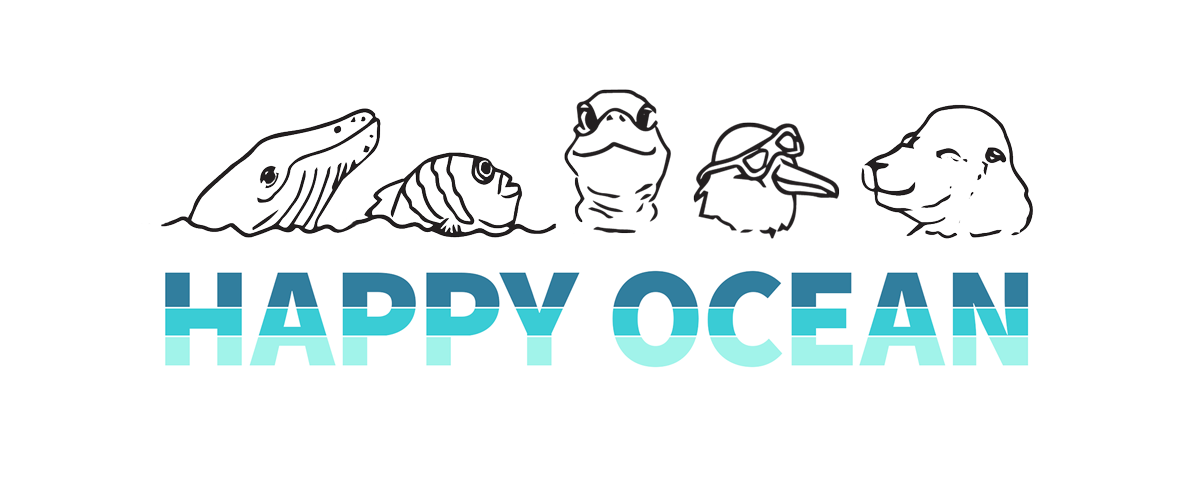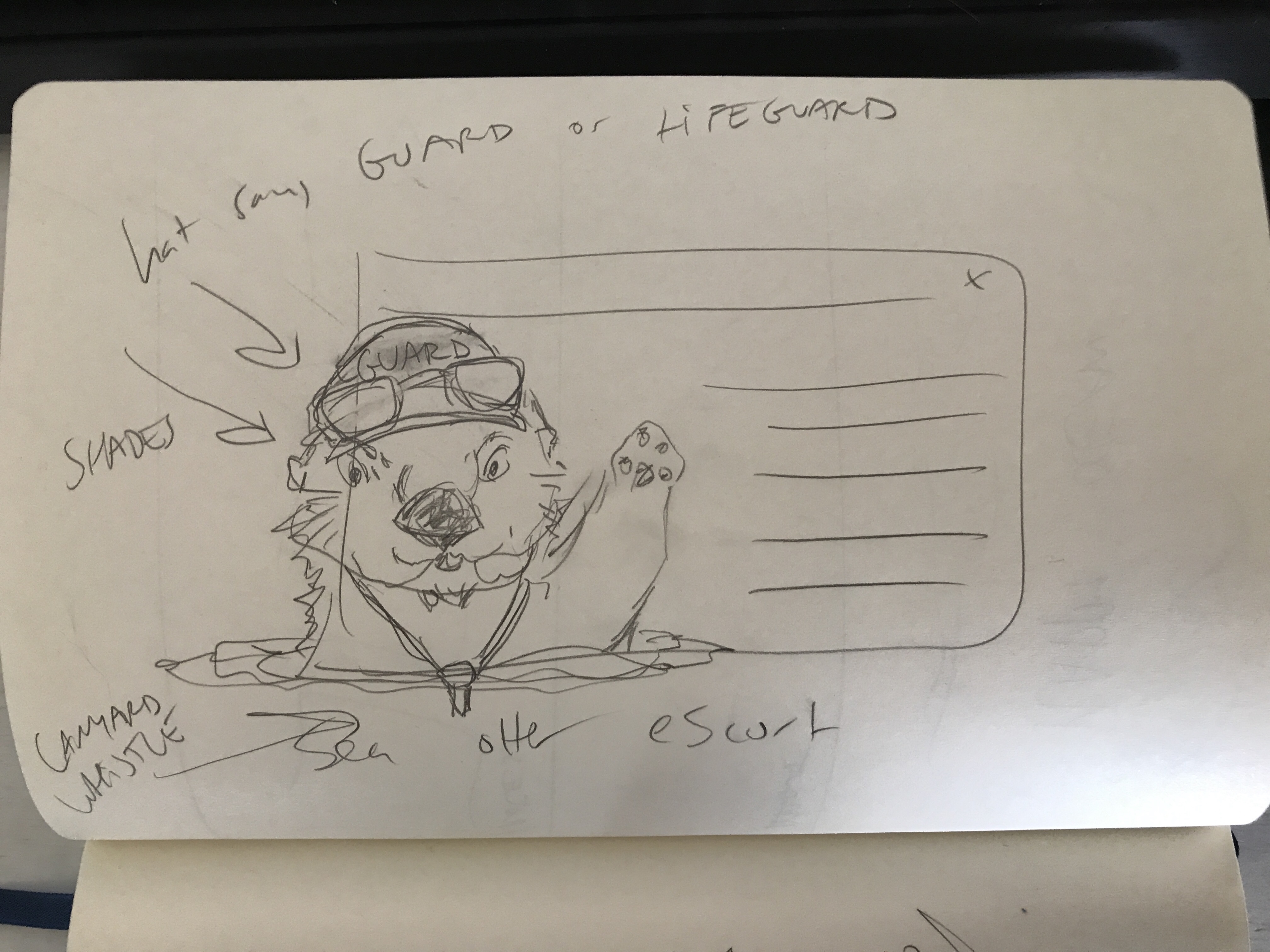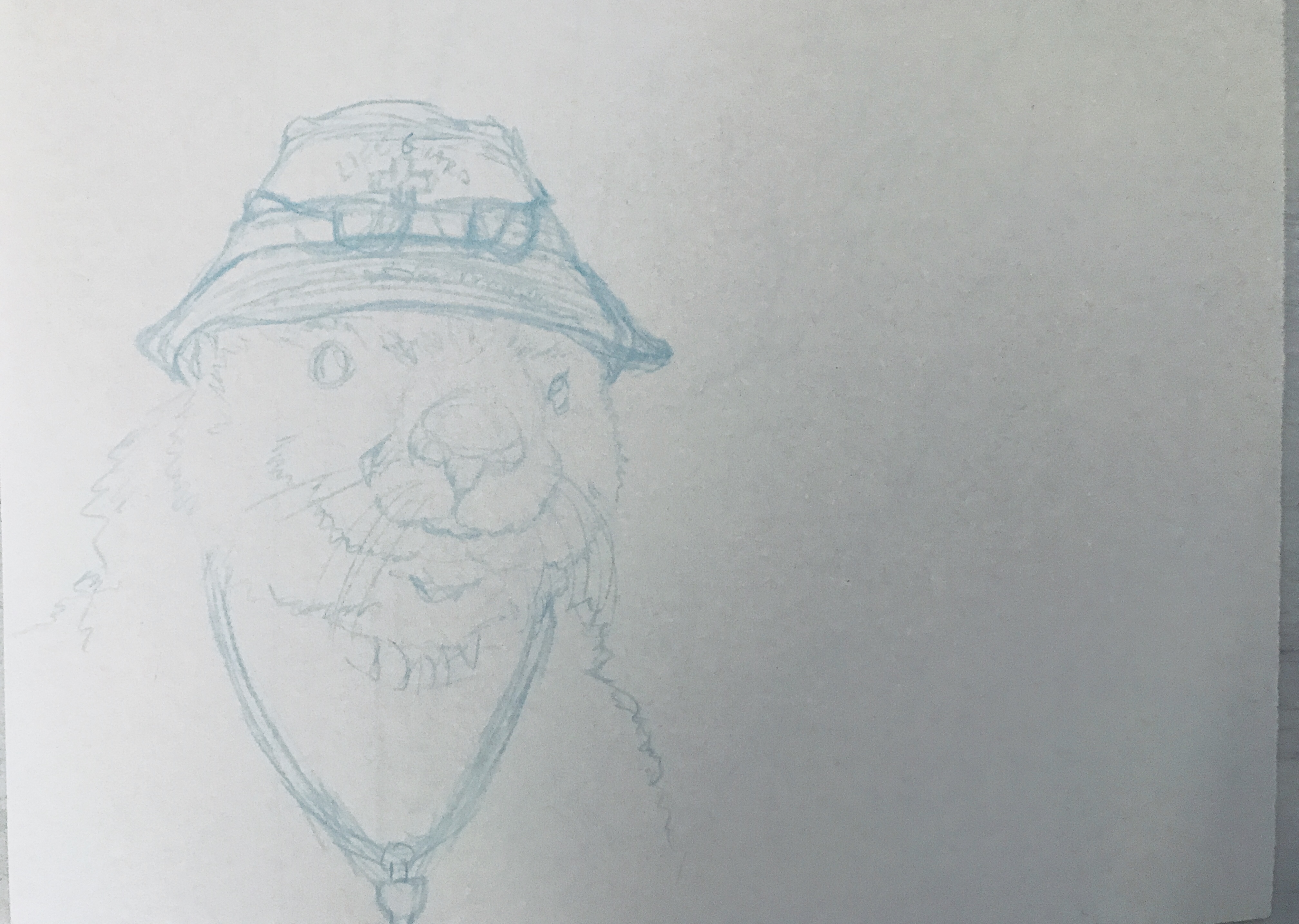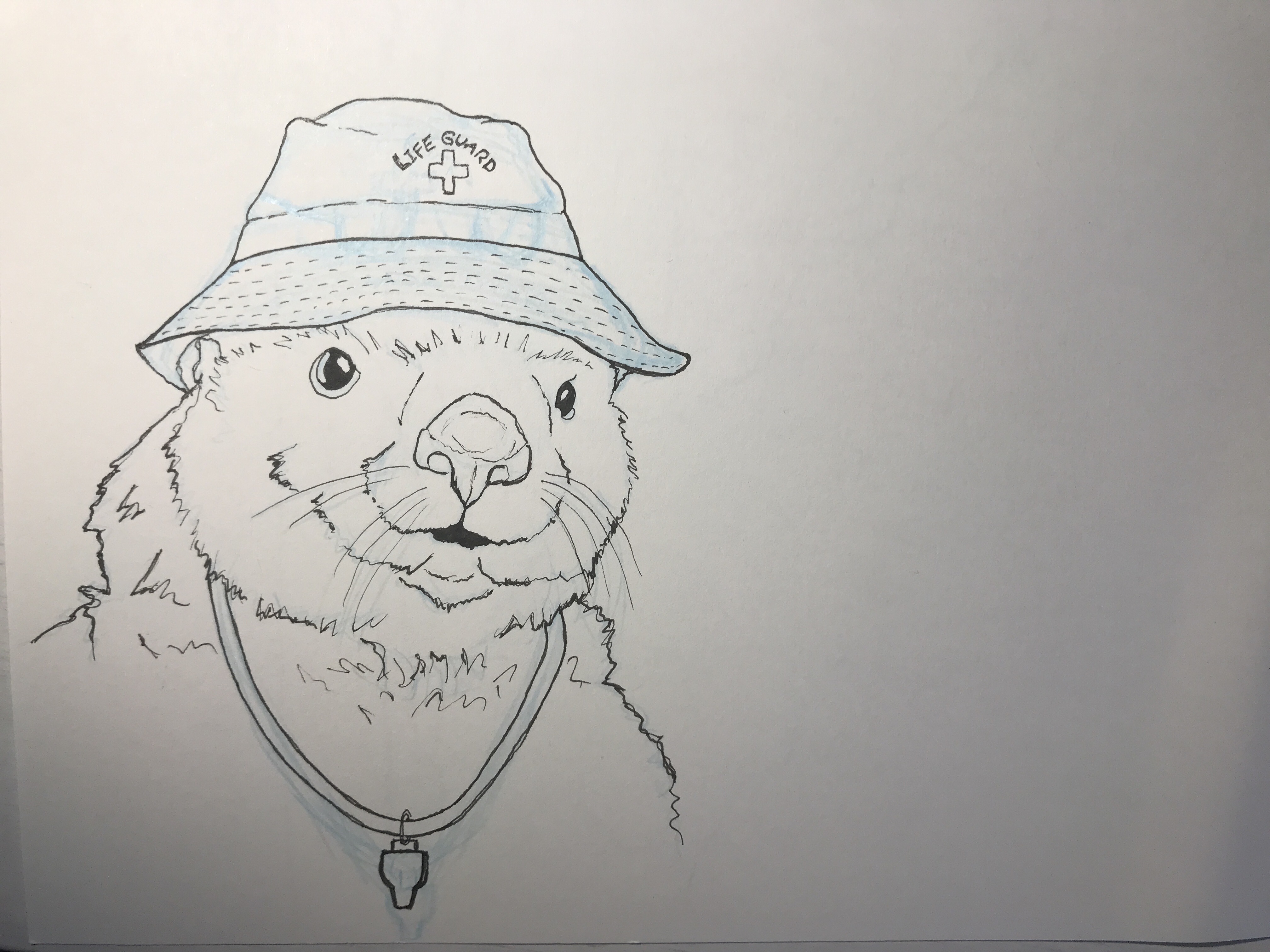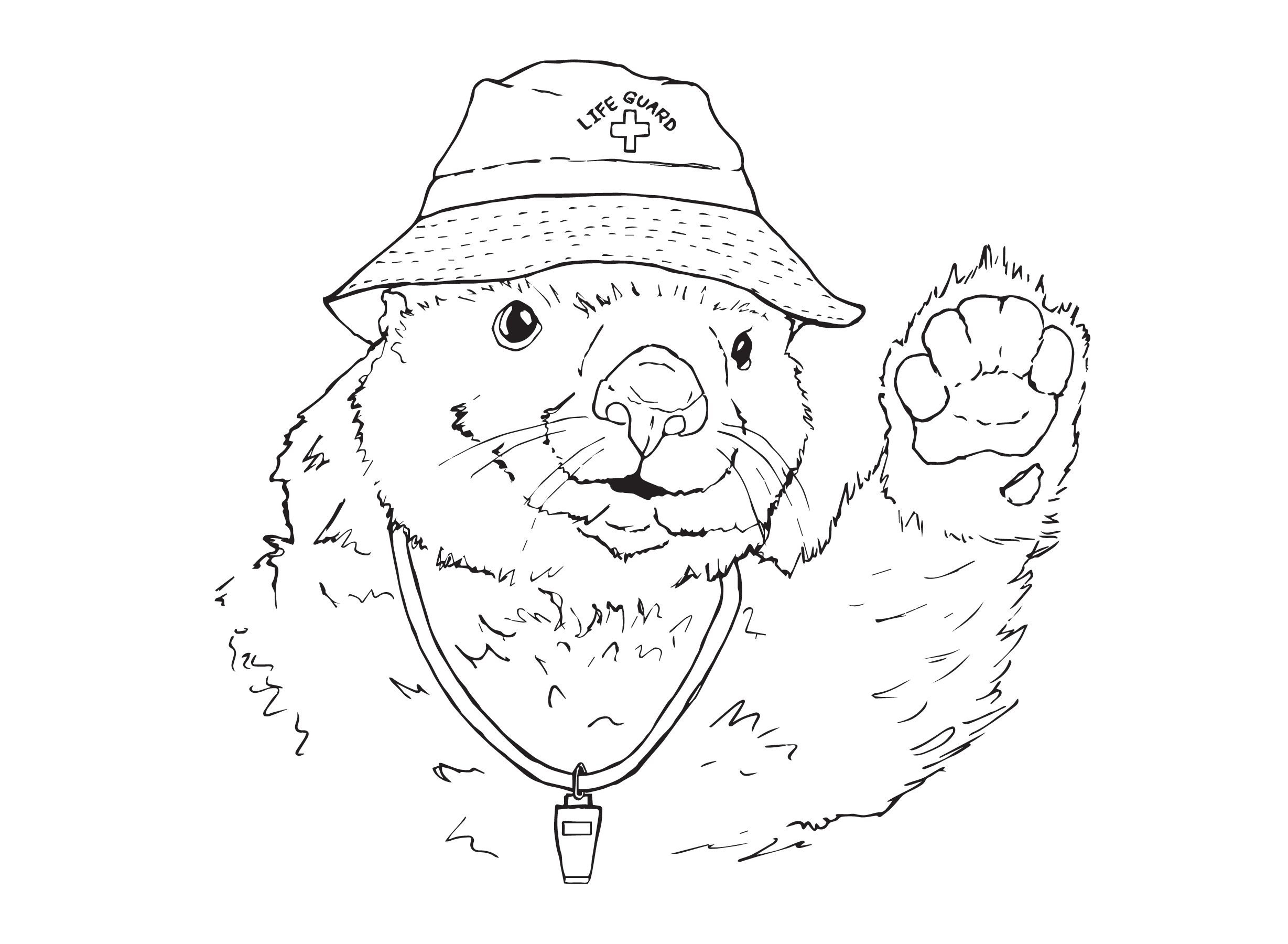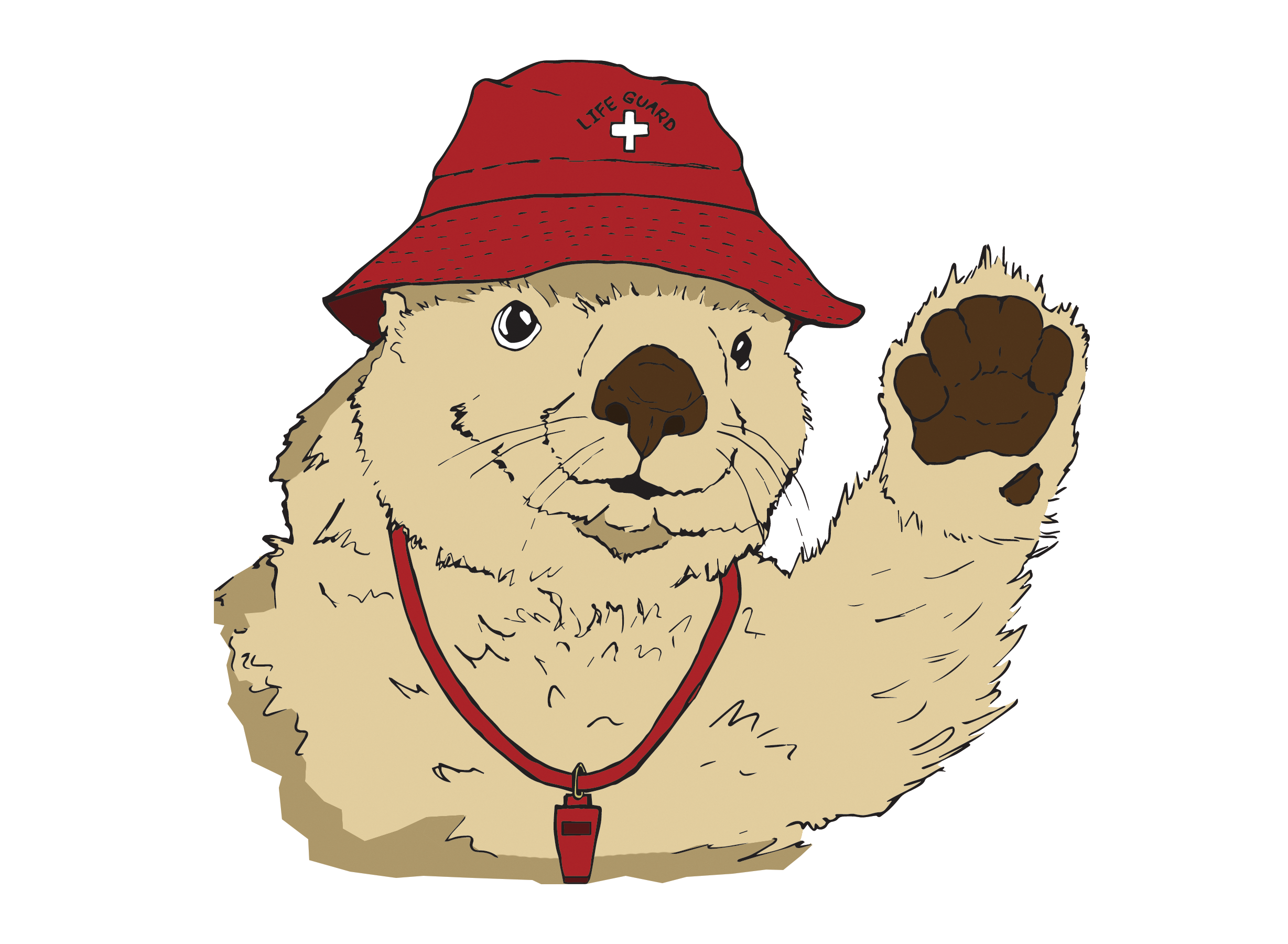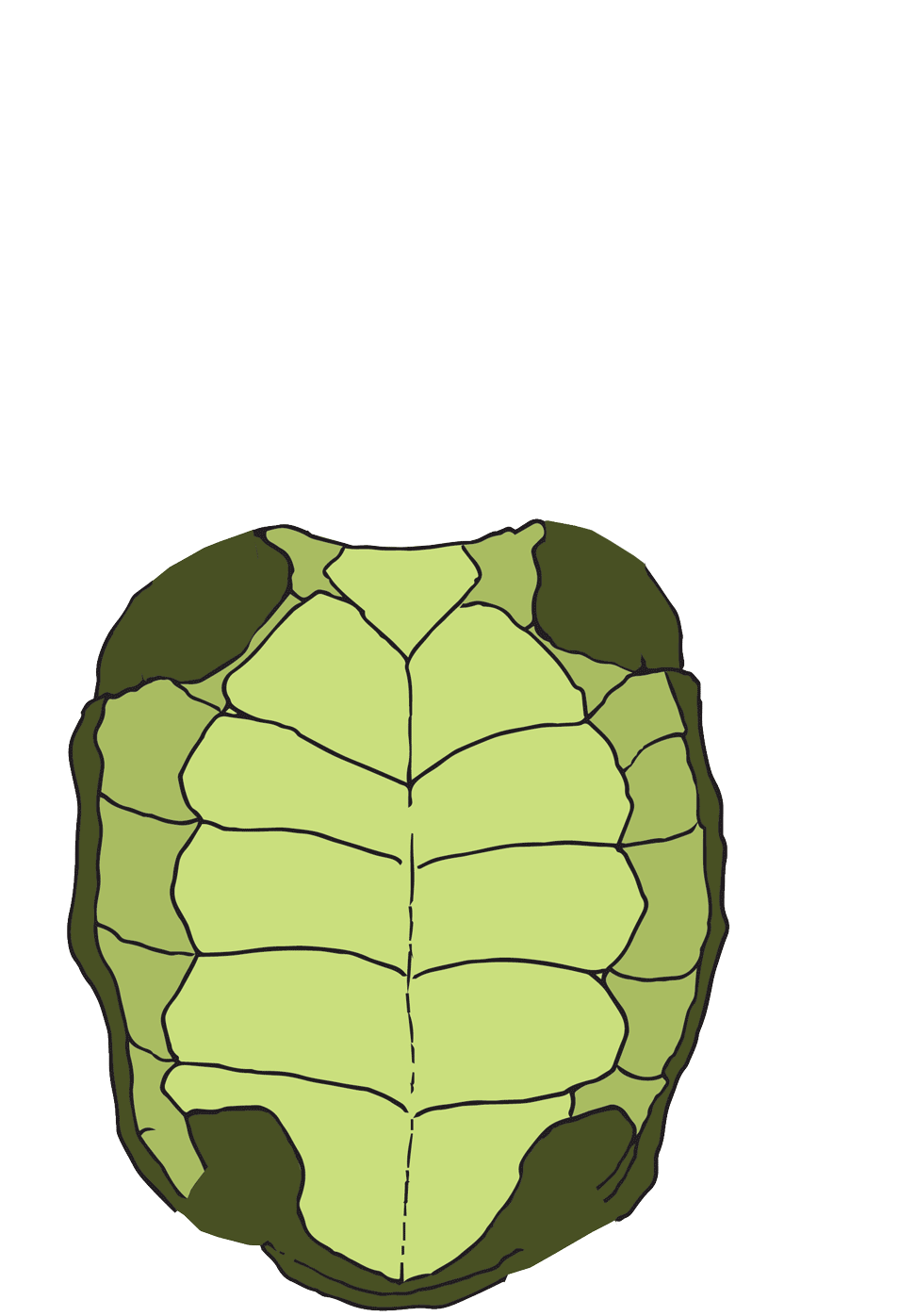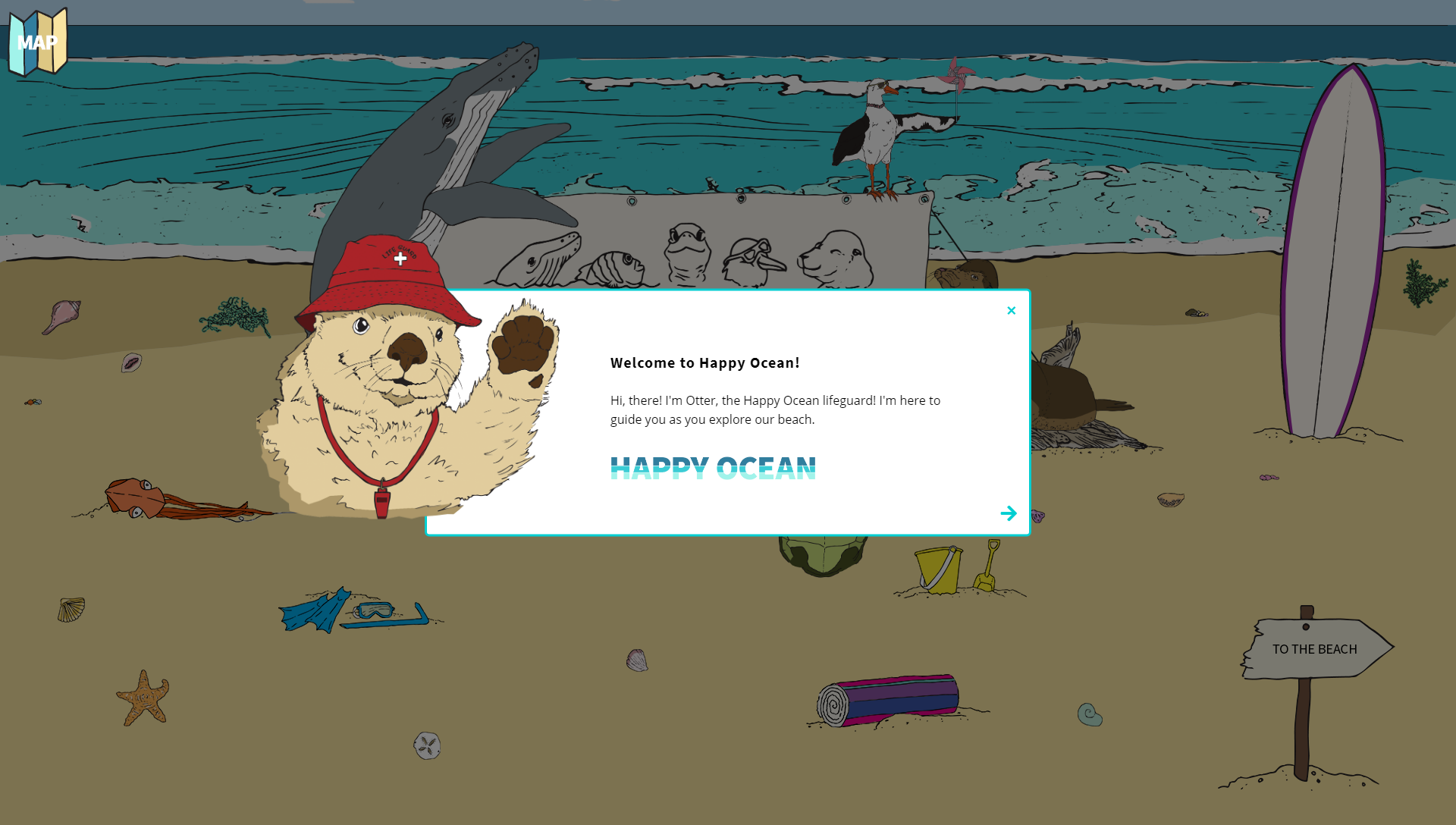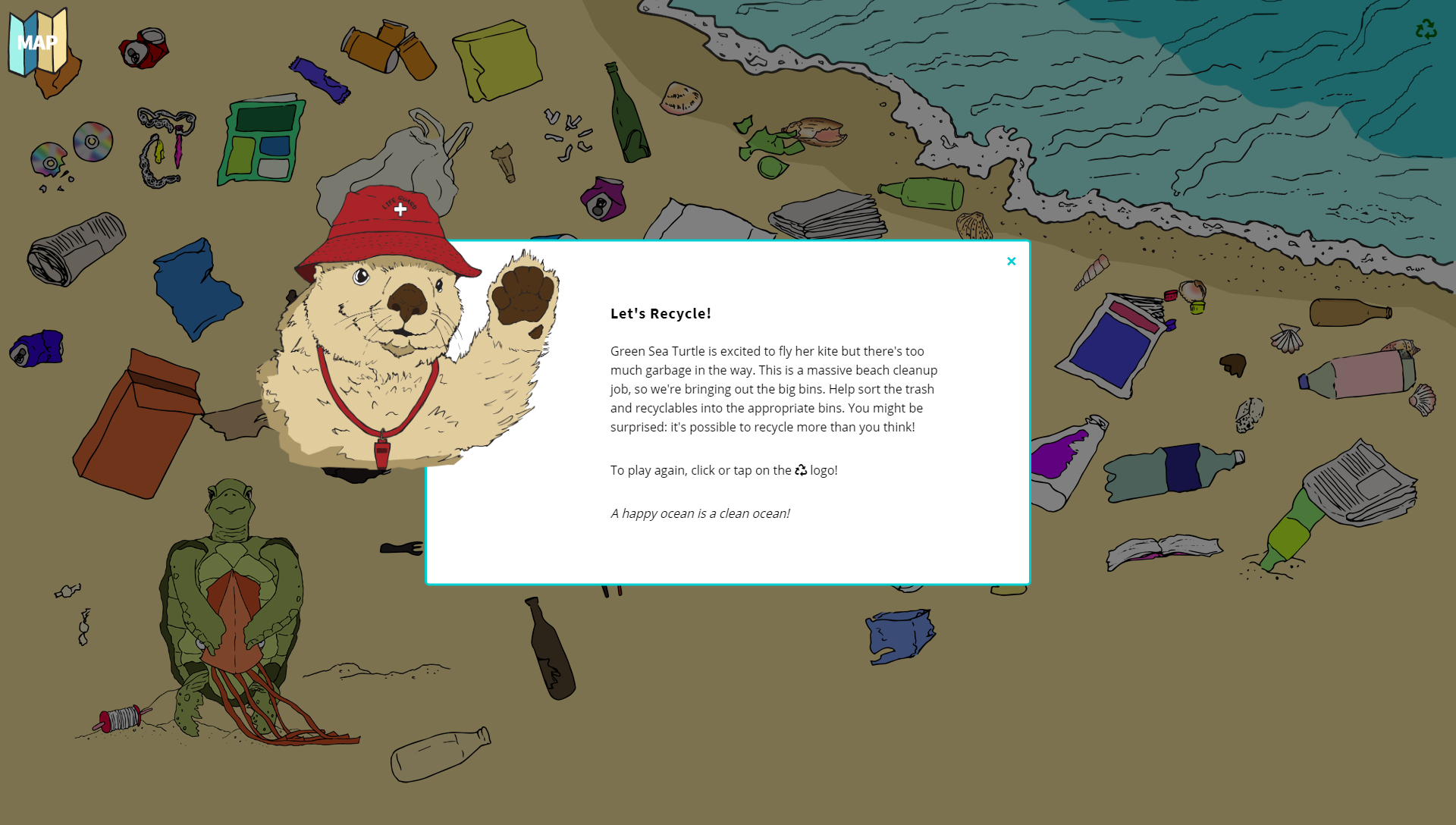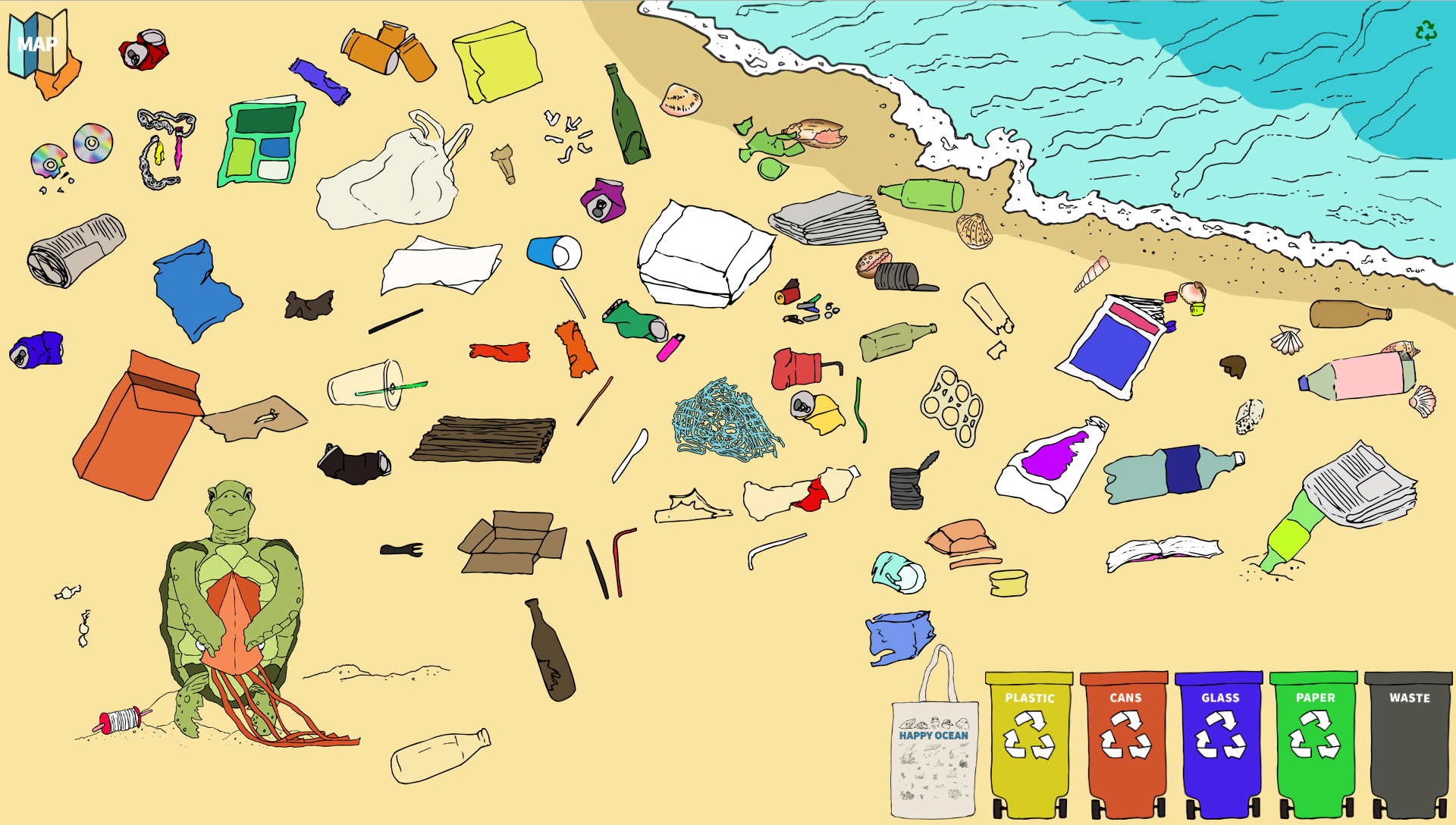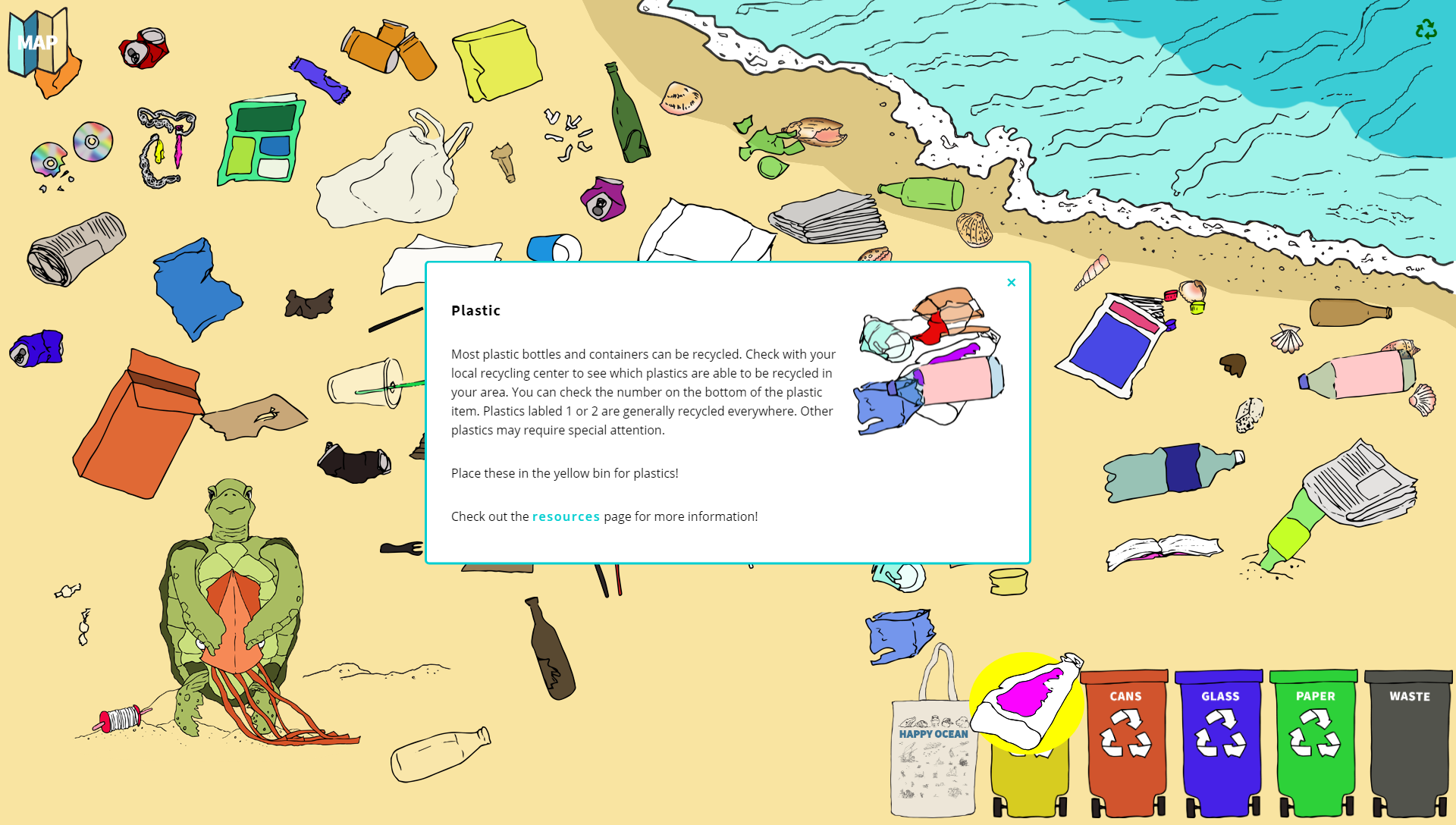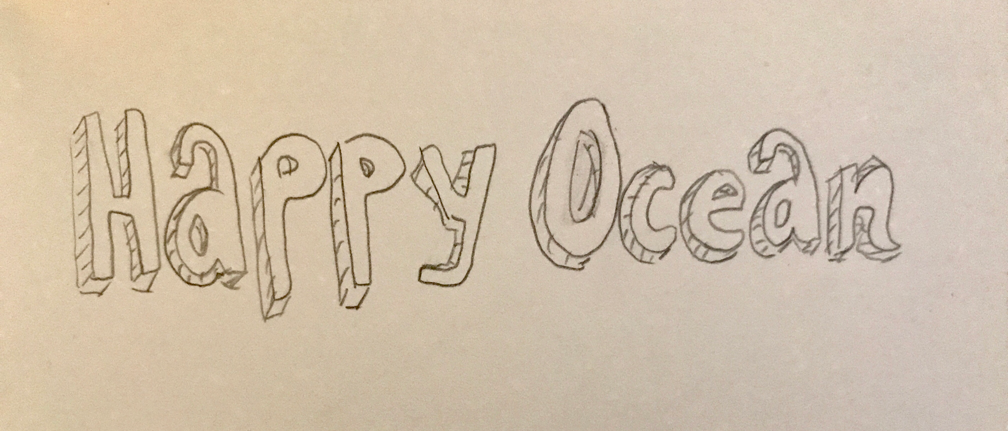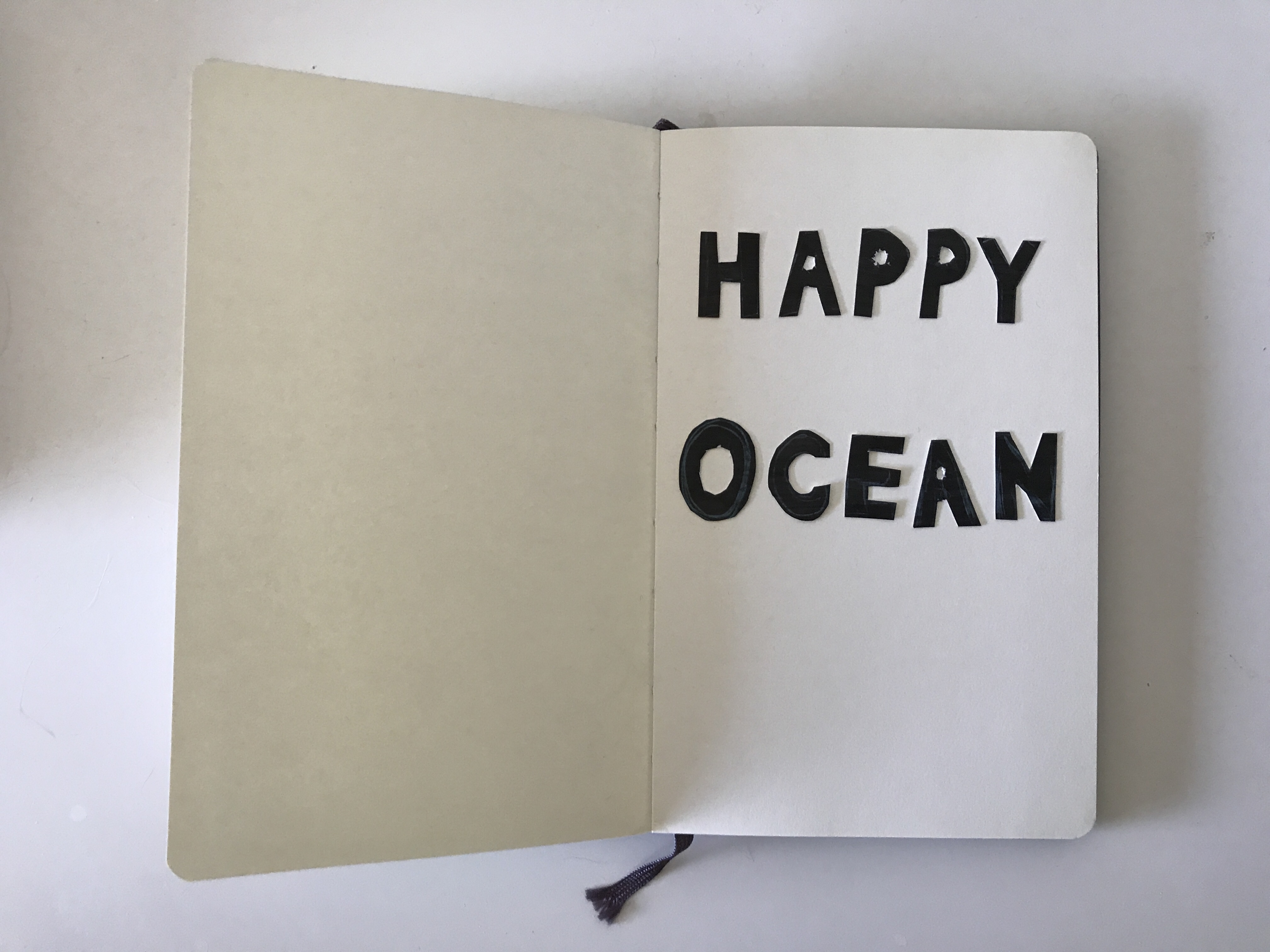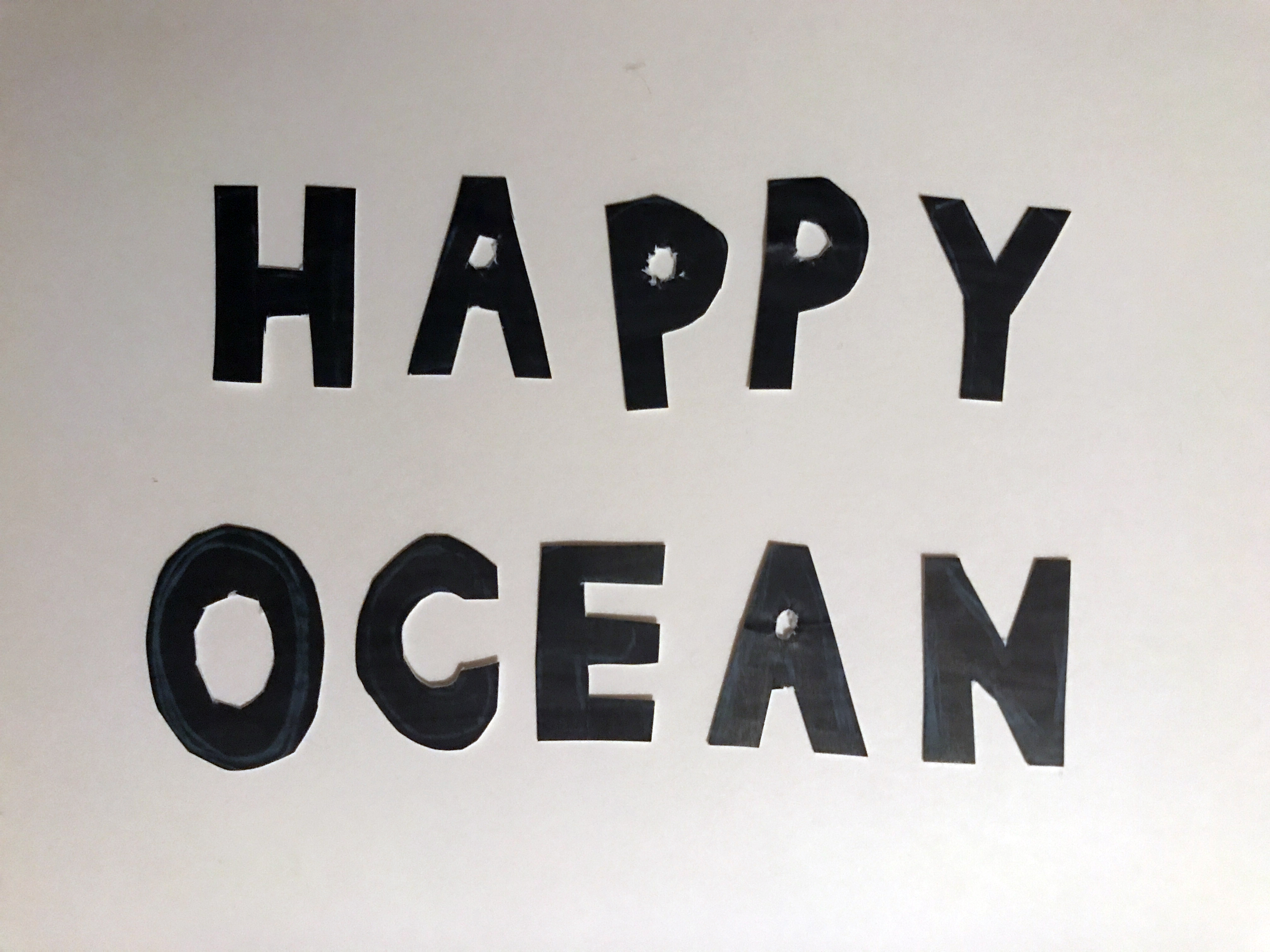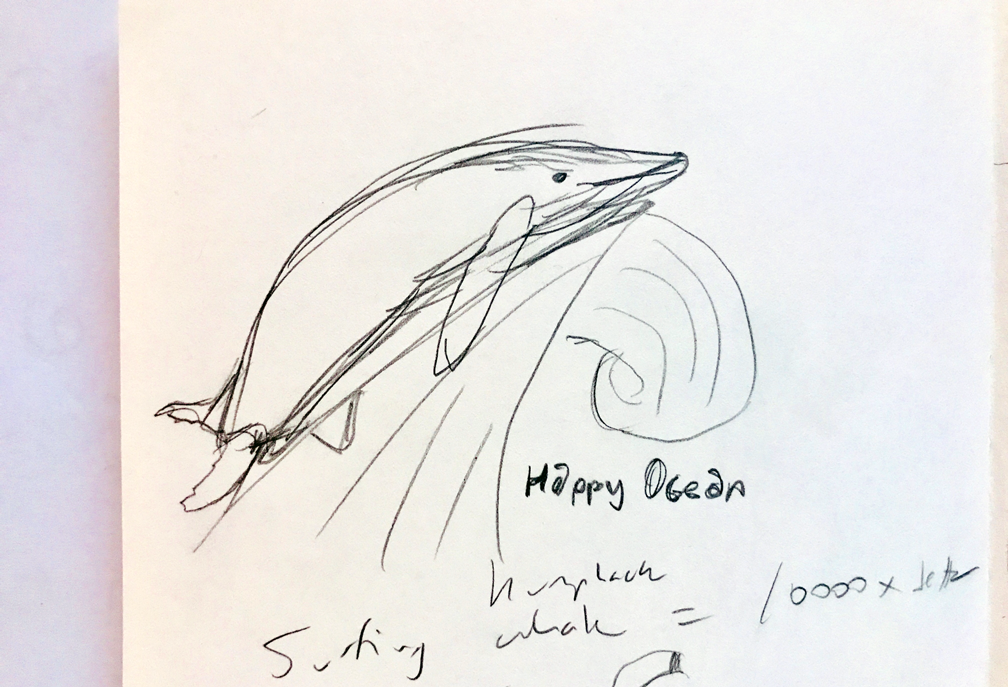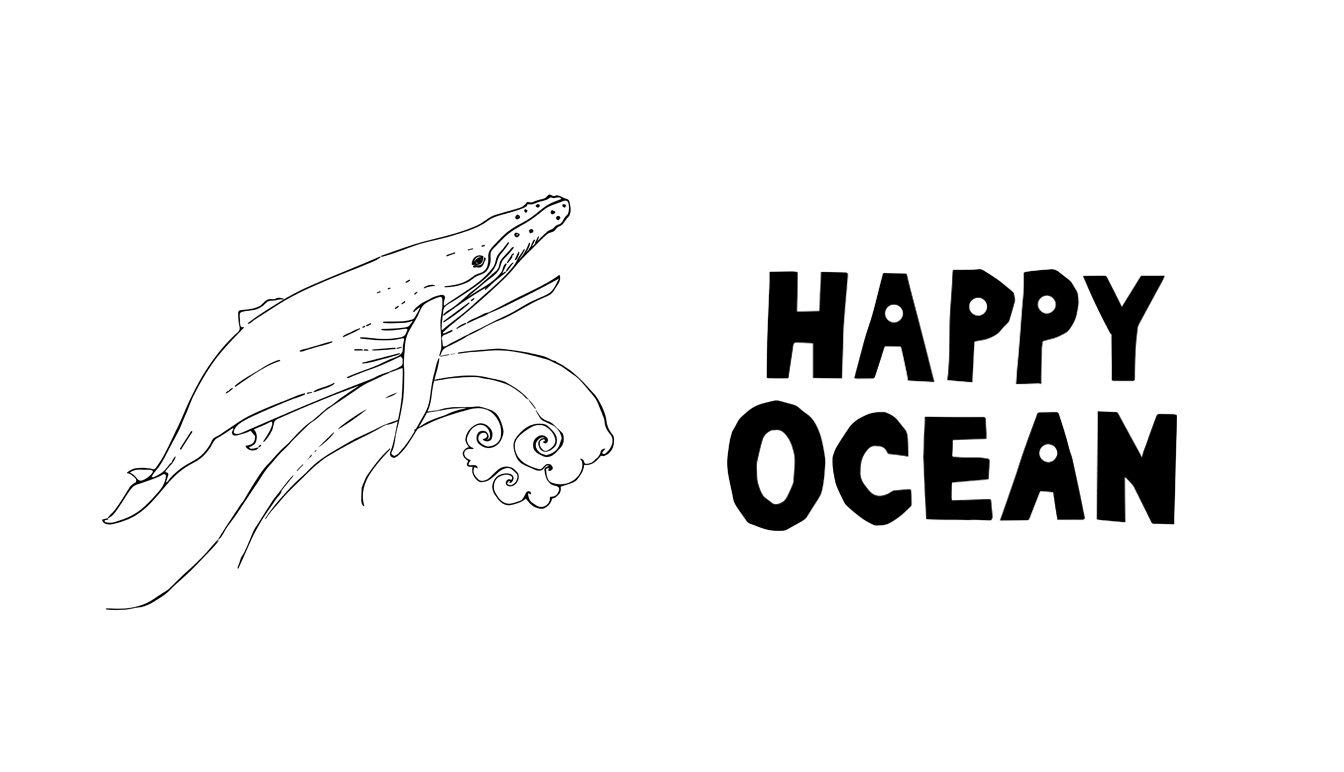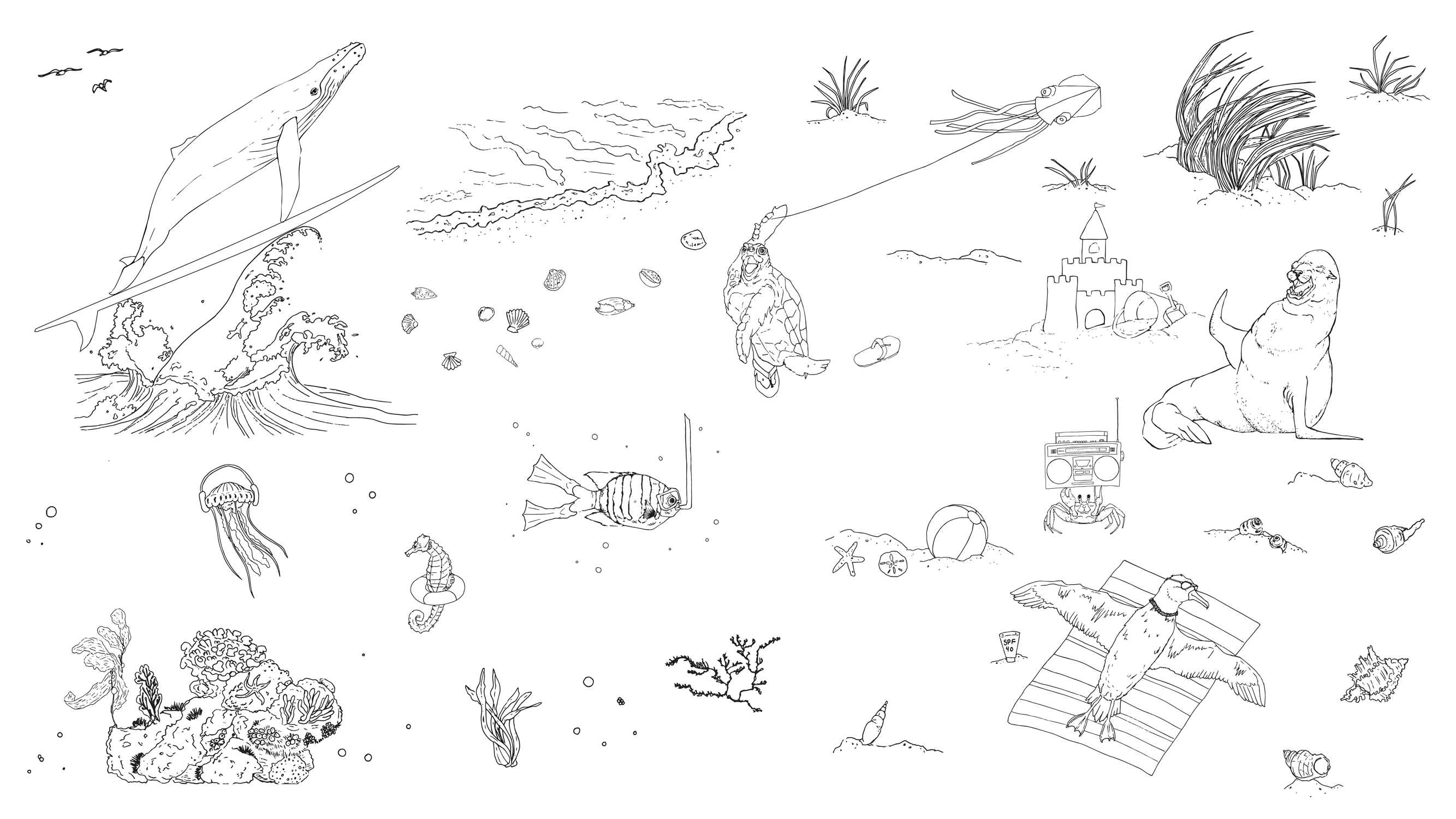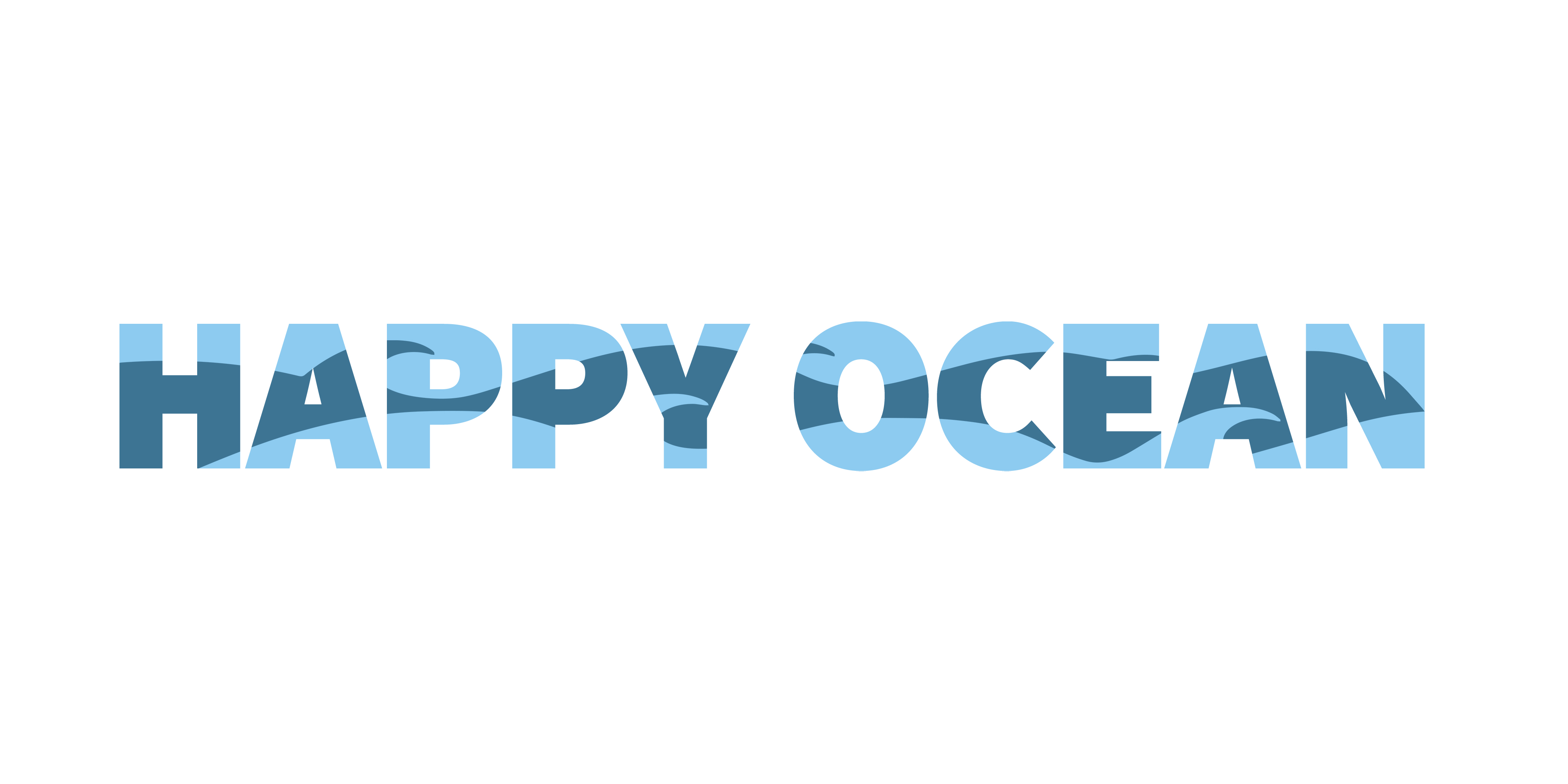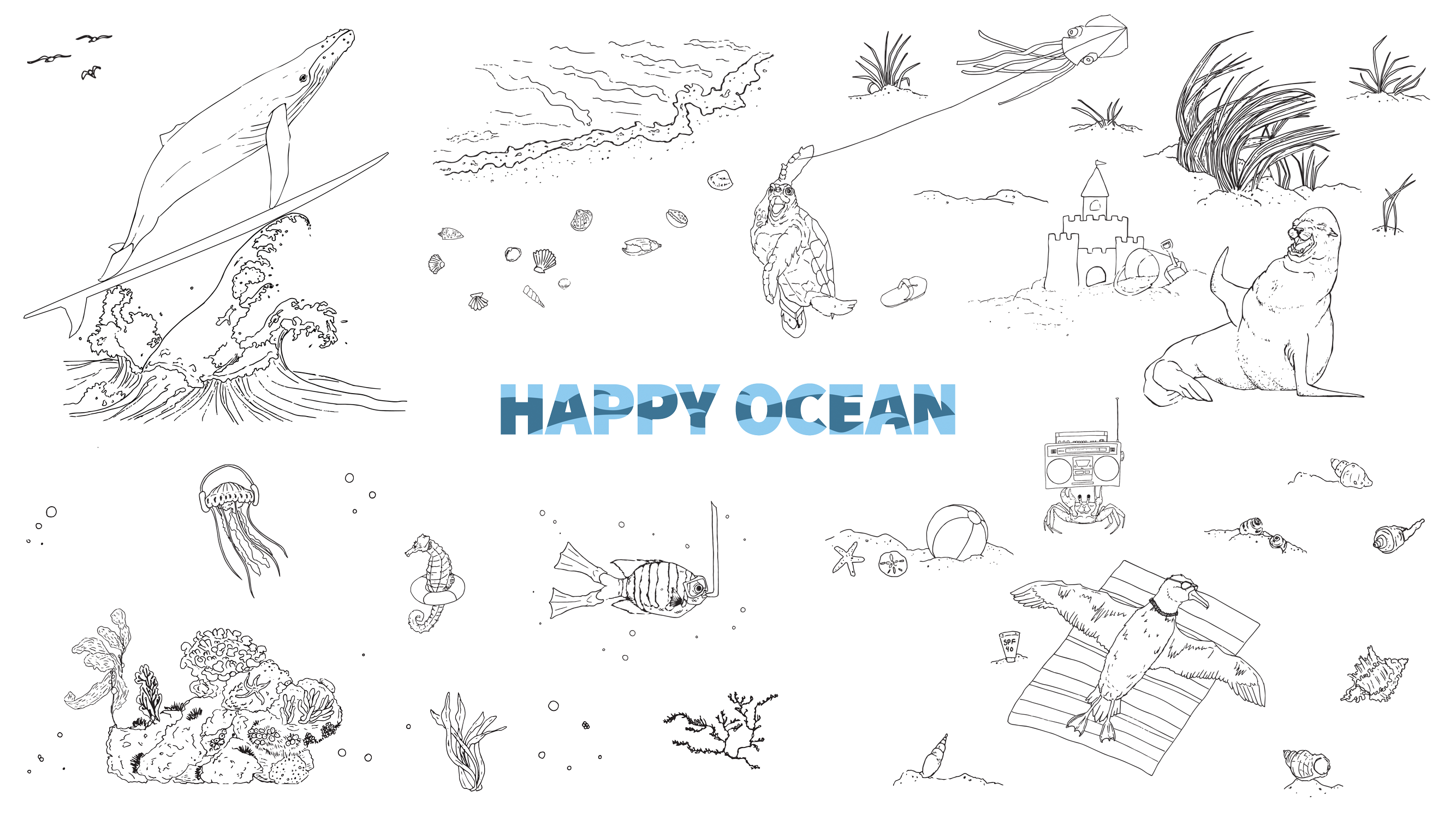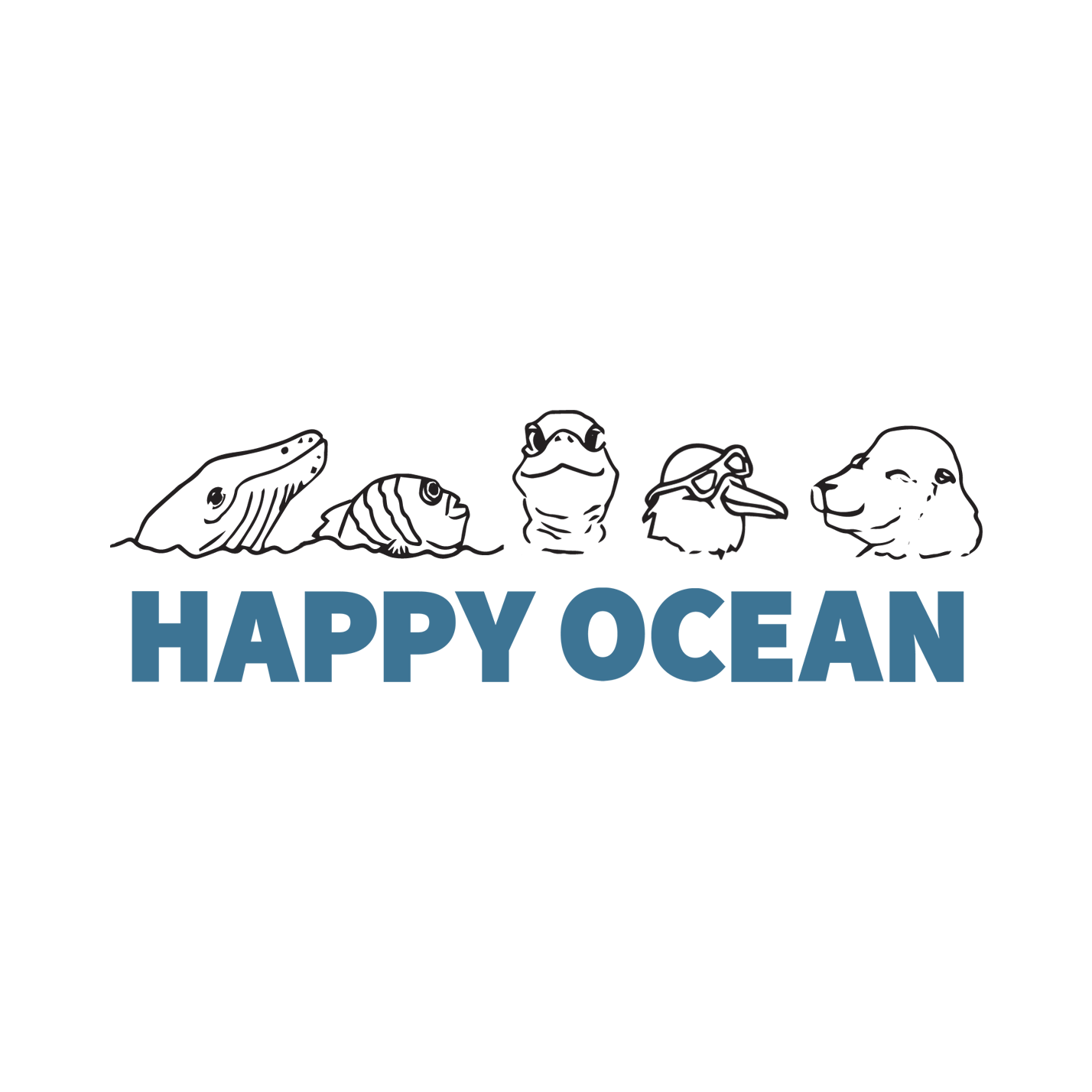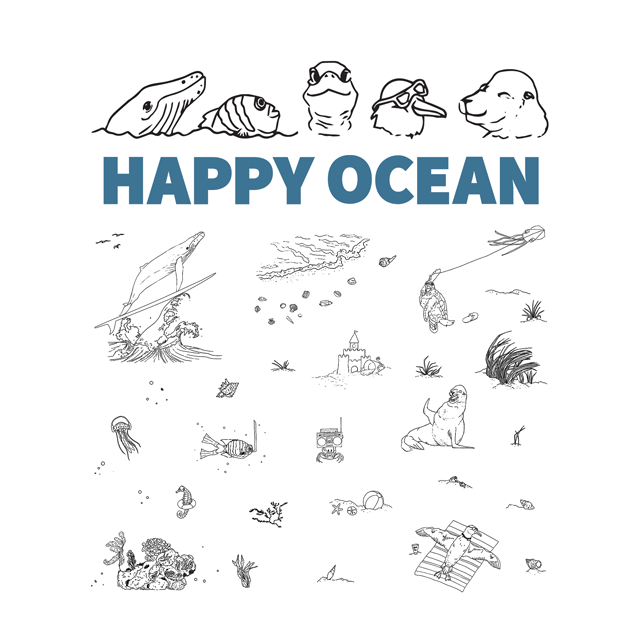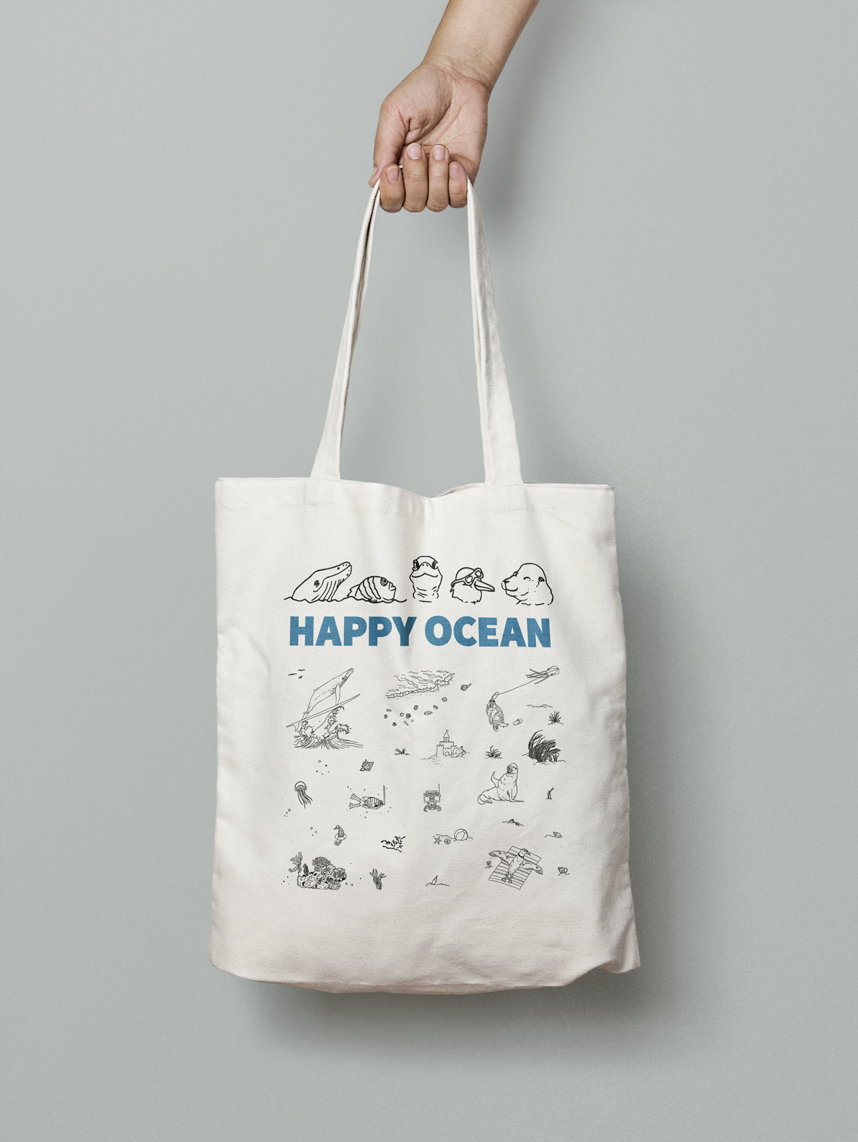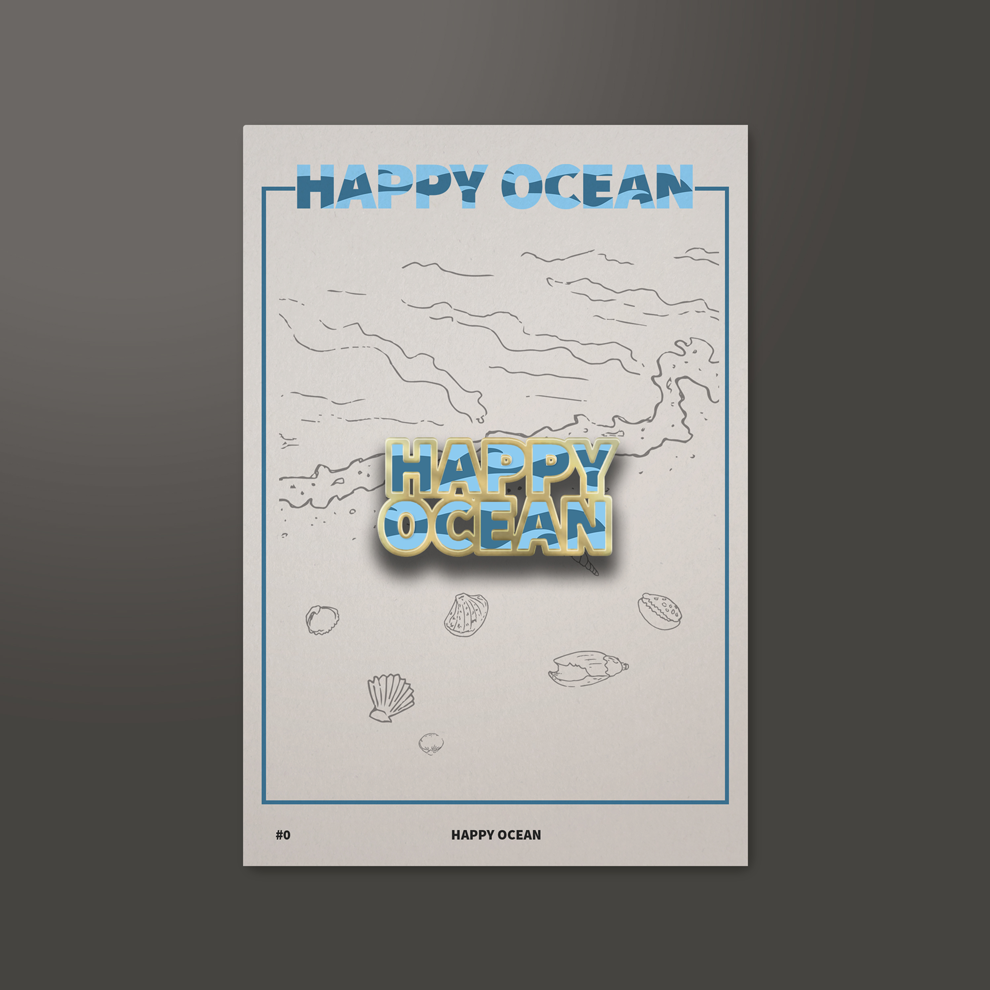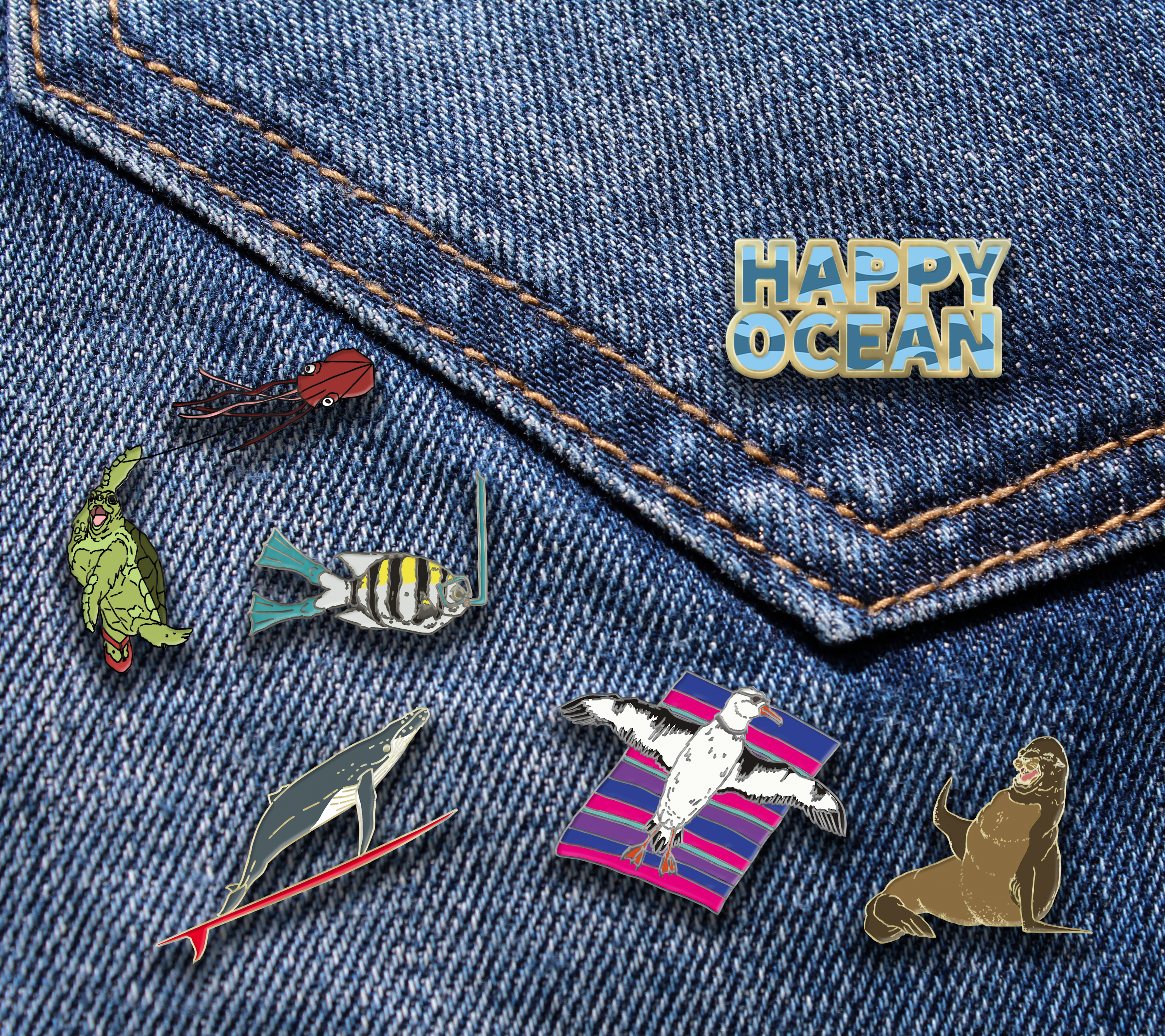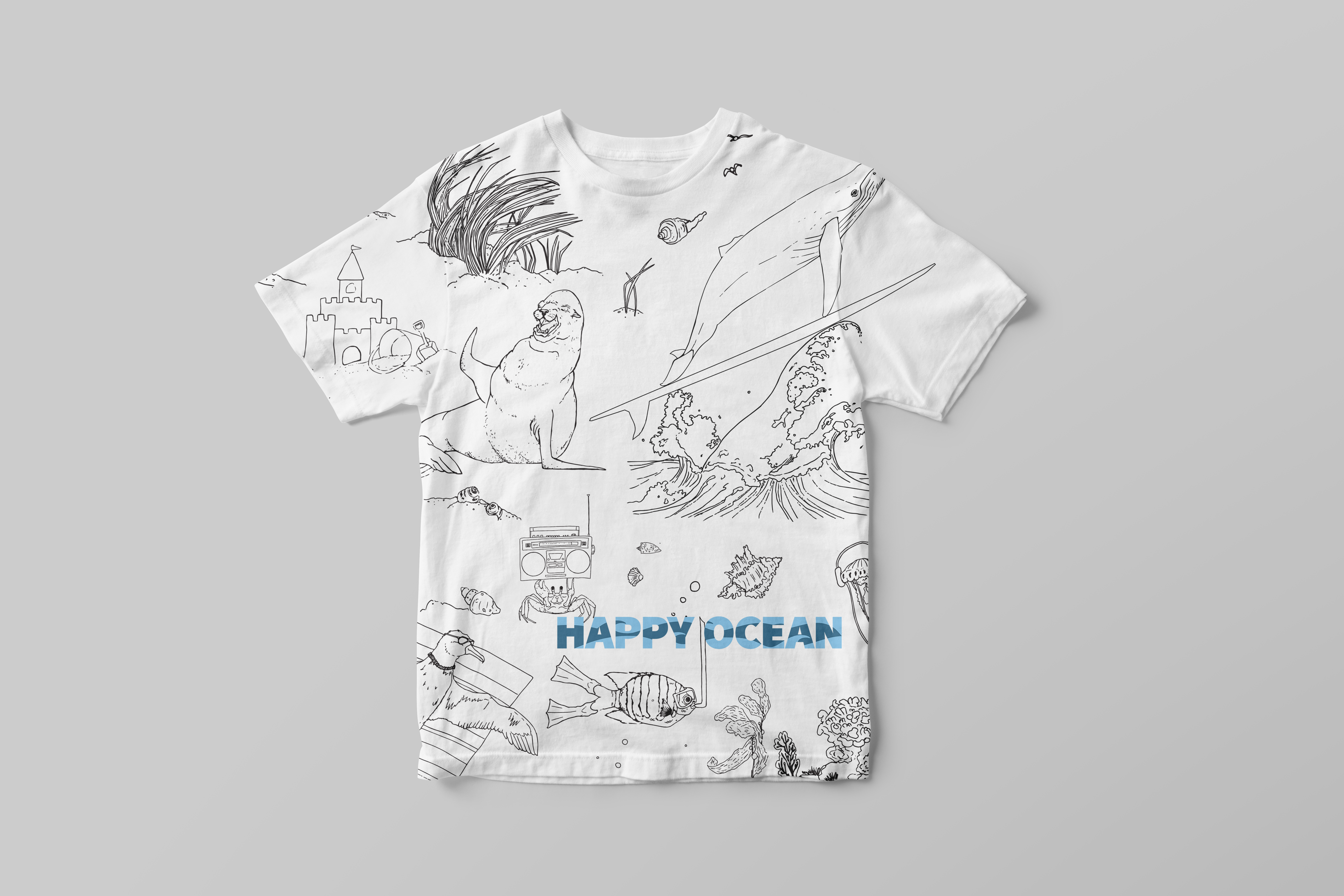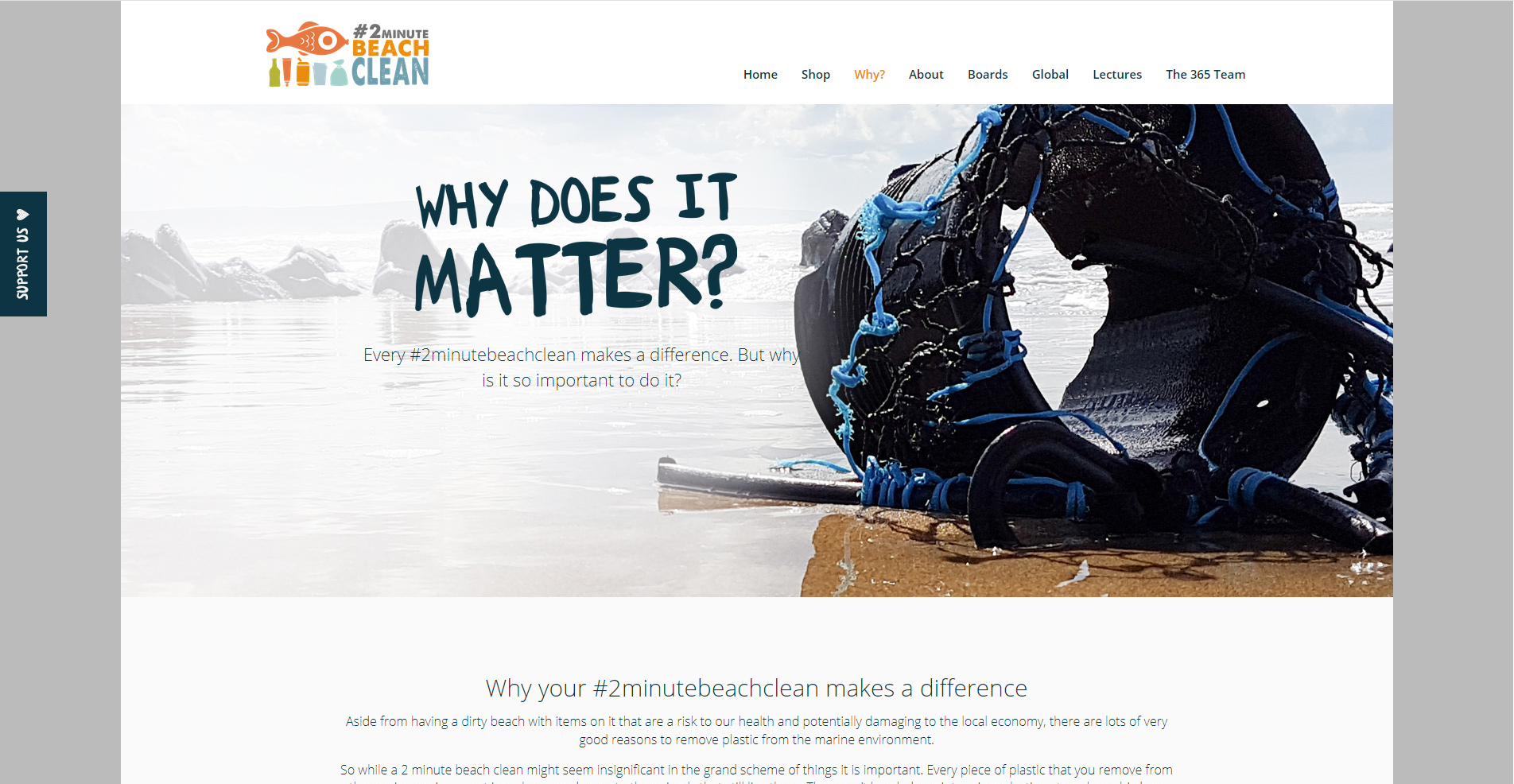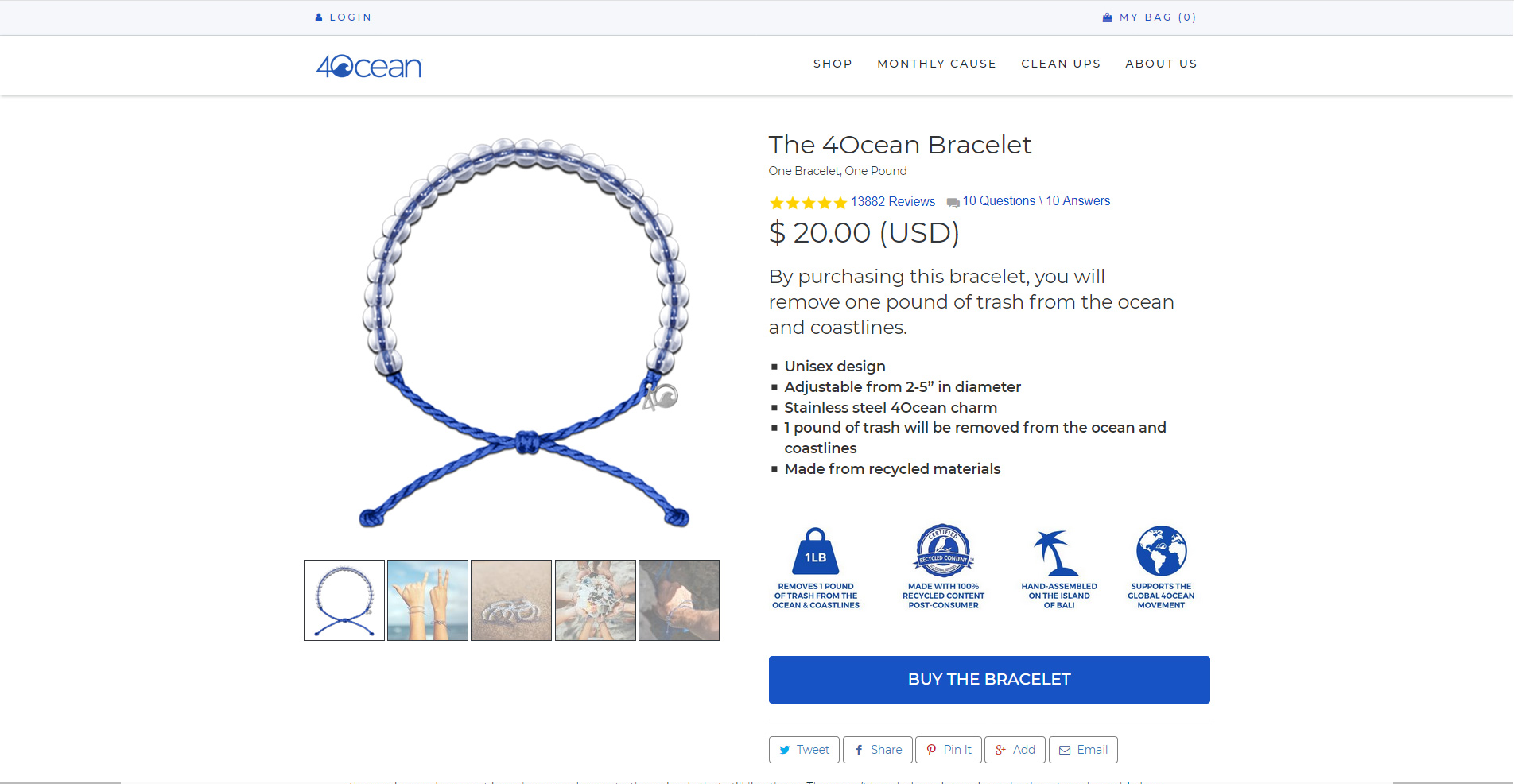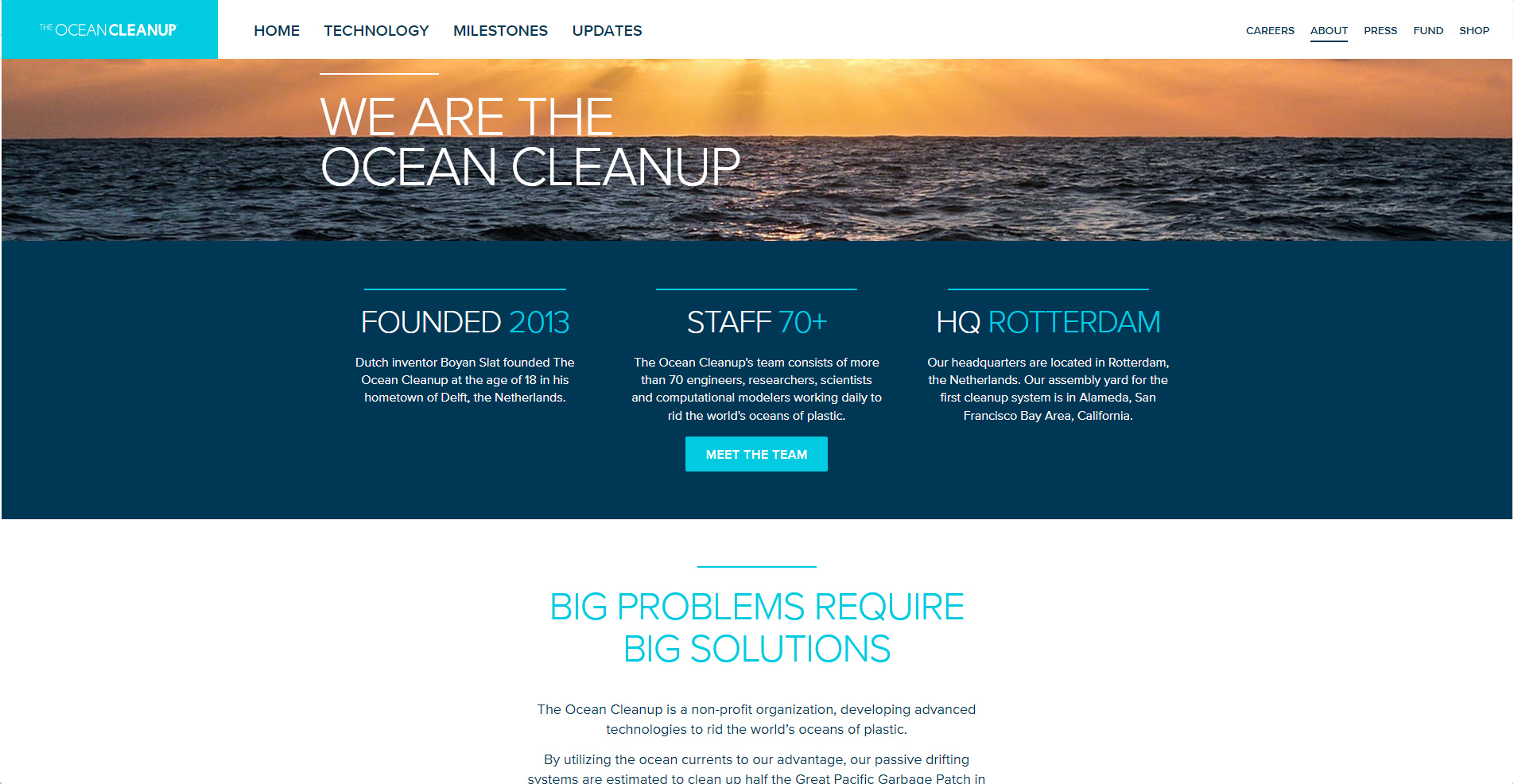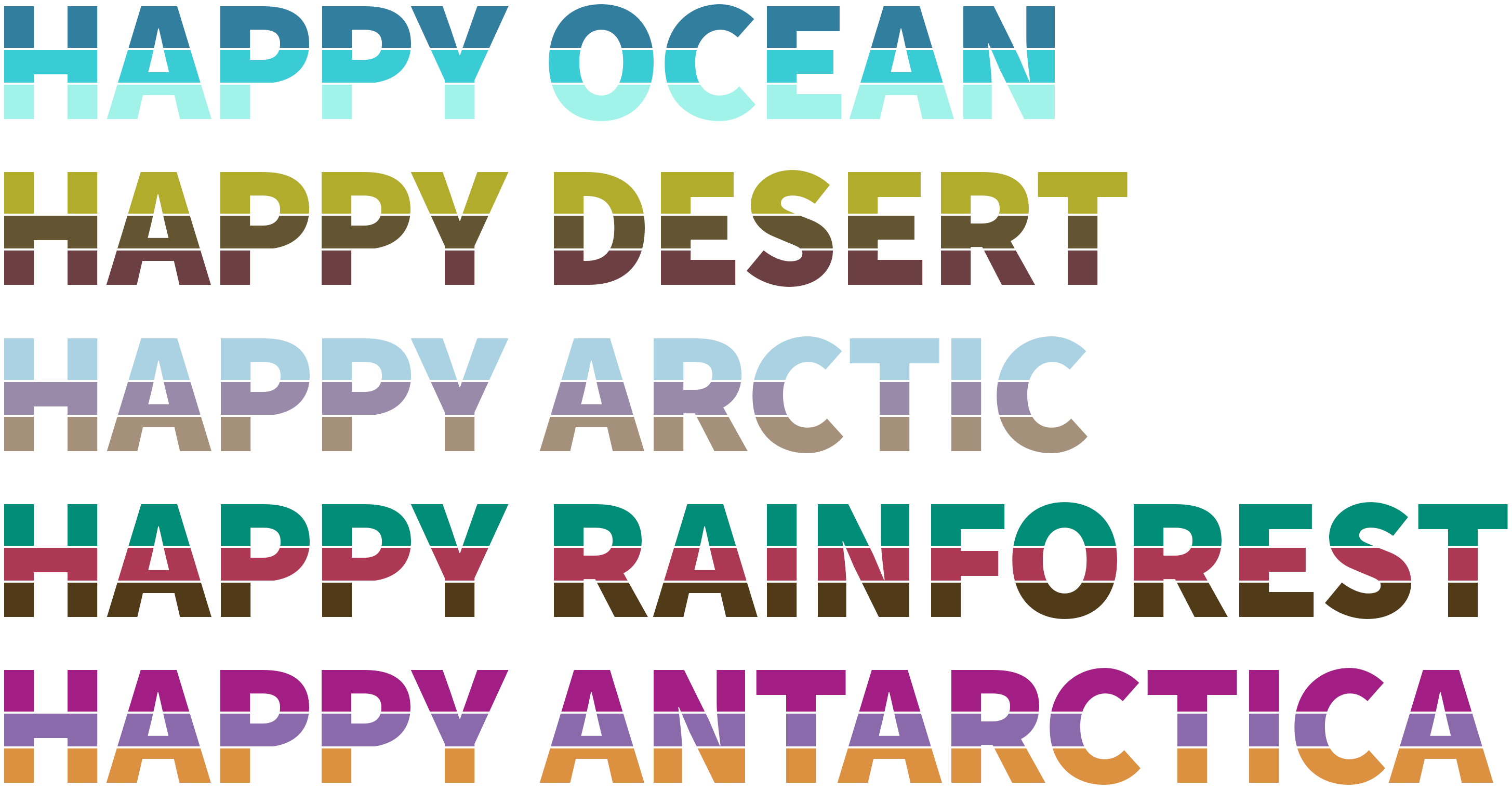A happy ocean is a clean ocean!
Happy Ocean is an interactive website that addresses the effects of plastic pollution on marine animals. The website tells the story of five ocean animal friends who meet for a beach cleanup party. There are several scenes on the beach that tell stories about the experiences of these mascots living with plastic in the ocean. By interacting with the characters and images in each scene, visitors can learn about the impact of plastic pollution and discover ways to help clean up our ocean.
I came up with the concept for Happy Ocean after learning about the overwhelming amount of plastic pollution in our ocean, specifically, the rapidly expanding Great Pacific Garbage Patch. I felt appalled and wanted to do something about it, but I didn’t know where to start; everything seemed so huge and unsolvable. Fear and anxiety-based imagery and messages were not inspiring to me. Instead, all I wanted to do was hide them when they appeared in my social media feeds. I found that I was far more receptive to news articles and movements that spoke of hope instead of doom. Articles and organizations that presented possible solutions to the crisis of plastic pollution actually inspired me to get involved. Happy Ocean was born out of this desire to proactively engage with and explore the urgent issue of plastic pollution through a lens of optimism.
Happy Ocean showcases small puzzles to solve that are meant to engage visitors and hold their attention. There are elements of silliness mixed with facts and information about all the different ways visitors can participate in cleaning up and preserving our ocean, so that together we can all help these marine animals thrive. The project intends to confront and discuss the seriousness of the consequences of plastic pollution in our ocean in an approachable, positive way. The site and story are intended for all ages.
